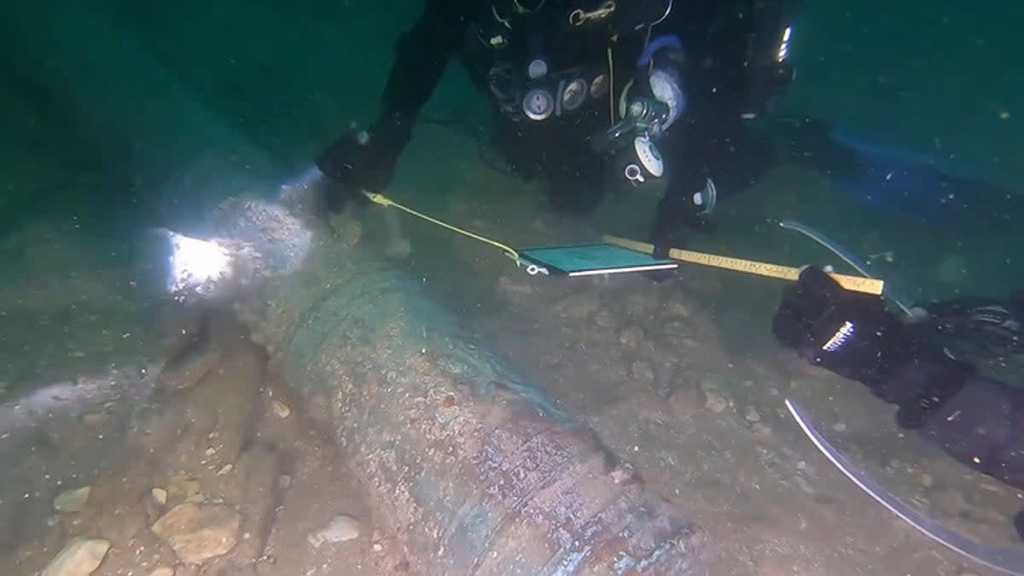
Eastbourne Shipwreck Identified As 17th-Century Dutch Warship

By Staff, Agencies
A remarkably preserved shipwreck known only as the “unknown wreck off Eastbourne” has finally been identified as the 17th-century Dutch warship Klein Hollandia which was involved in all the big battles in the second Anglo-Dutch war.
Its identity has been confirmed after painstaking research by archeologists and scientists after its initial discovery in 2019, having lain 32 meters [105 ft] underwater on the seabed since 1672.
Evidence gathered by a team of professional and volunteer divers, as well as through archival research and dendrochronological [tree ring] analysis of the wood samples, point to it being the Klein Hollandia warship which was built in 1656 and owned by the Admiralty of Rotterdam.
Historic England worked in partnership with the Netherlands Cultural Heritage Agency and the Nautical Archaeology Society to confirm the identity of the wreck, which carries the highest level of protected status.
Its condition is said to be “remarkable” and Historic England hope it could offer a wealth of information about how 17th-century Dutch ships were built and the activities of the warship during its final voyage.
Material found on the seabed included much of the wooden hull, cannon, Italian marble tiles and pieces of Italian pottery. Petrographic examination [the use of microscopes to examine rock], mineral composition and isotope analysis identified stone as being marble from the quarries of the Apuan Alps, home to some of the finest marble in Italy.
In 1672, the ship was part of the squadron to escort the Smyrna fleet while sailing from the Mediterranean into the Channel, en route for the Netherlands. At the Isle of Wight, the squadron was attacked by an English squadron under Adm Sir Robert Holmes, with the vessel being damaged severely and its commander Jan van Nes killed in action.
The ship was boarded and conquered by the English, but sank shortly afterwards with English and Dutch sailors on board. This surprise action by the small squadron contributed to the start of the third Anglo-Dutch war.
The wreck was first spotted as an anomaly on the seabed during a hydrographic survey in 2015 but it was not until 2019 that David Ronnan, a local dive operator, discovered it to be a shipwreck.
“The identification of the Klein Hollandia offers a glimpse back into the 17th century, giving us a chance to learn more about the maritime history of this period and to uncover treasures which have been underwater for hundreds of years,” said the heritage minister, Lord Parkinson.
Duncan Wilson, chief executive of Historic England, said: “Uncovering the story of the warship Klein Hollandia opens up another fascinating chapter in the already rich, shared maritime history between the UK and the Netherlands.”
Mark Beattie-Edwards, CEO of the Nautical Archaeology Society, said: “From our very first dive on the wreck, back in April 2019, we have been fascinated by the range of material on the seabed. The impressive amount of wooden hull structure, the ships’ cannon, the beautifully cut marble tiles, as well as the pottery finds, all point towards this being a Dutch ship from the late 17th century coming back from Italy. Now, after four years of investigation and research, we can confidently identify the vessel.”
Gunay Uslu, the Dutch state secretary for culture and media, said: “This provides valuable knowledge and important insights into the shared history of our seafaring nations.”



